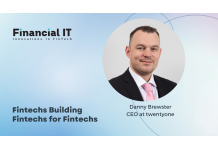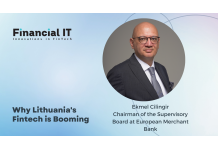Winning: Meeting Fintech Customer Service Imperatives Through Financial Inclusion and Hyper-Personalization

- Kathy Stares, Executive Vice President of North America at Provenir
- 08.02.2023 10:00 am #fintech
This past September, the Consumer Financial Protection Bureau noted the rising delinquency rate for recently purchased cars loans. Loans originated in 2021 and 2022 are starting to show higher delinquency rates relative to loans originated in previous years, even when compared to loans unaffected by pandemic-related stimulus payments. This concerning trend is even worse for subprime and deep subprime borrowers.
Default rates on automobile loans are very telling because transportation is essential for a vast majority of consumers and there is strong incentive to stay current on payments. But you don’t have to look at auto loan delinquencies to know that in the current inflationary era, borrowers are struggling.
The harsh reality of the current economic climate poses significant challenges for both businesses and consumers – a situation the financial services industry must recognize as both a threat and an opportunity.
Financial Services Embracing Technology and Data to Provide a Helping Hand to Consumers
Given consumers’ shifting economic situations, risk profiles are changing, necessitating that financial services companies meet their customers where they are by providing a higher level of personalization than ever before. Early insights into customers’ circumstances or preferences are critical to offer products and solutions to meet changing customer requirements and minimize risk.
How do you keep consumers whole? How do you keep them loyal? And how do you regain as many funds as you can? You do this by looking at how to leverage predictive technology to understand which customers have the best propensity to pay. You can do this if you are running artificial intelligence (AI) and machine learning and looking at customer status based on all sorts of alternative data to gain a picture of where they are in their lives. Alternative data is key in this equation because information from the credit bureaus looks back and isn't really predictive of a customer’s current or future financial health.
We are in a very different place from where we were in 2008 when consumers started defaulting on mortgages en masse and no one was able to predict this. We are now able to create an operational online environment that enables smart decisions with AI analysis to predict the next big fracture, so we can intervene to offer solutions to these consumers before default.
Do we need to reduce their credit limit – not in a punitive way, but in a way that is conducive to keeping them from getting too extended? Do you help someone by restructuring their debt? Whatever the case, the important thing is to have options before charge-off to get in on the early collections and not be left holding the bag. These proactive efforts to keep consumers whole can make an indelible imprint on their psyche, such that they’ll continue to be loyal customers down the road, hopefully as they leave their financial struggles in the rear-view mirror.
Utilizing AI to Support Financial Inclusion and Hyper-Personalization
Meanwhile, the financial services industry is owning up to the fact that there has been a significant part of the population excluded in the standard way financial instruments have historically been offered. In the past, only specific financial organizations and institutions had business models that revolved around servicing disadvantaged populations or subprime lenders. With the increased recognition of this financial exclusion, banks and financial institutions will need to serve all consumers, and it's not going to be with these easily drawn lines as it was in the past. The industry is going to need to pivot and put new technology and processes in place to meet customers wherever they are along the full spectrum of credit risk.
This means leaning into financial inclusion and hyper-personalization. Use of prescriptive analytics that leverage alternative data, machine learning and AI can help organizations be successful in these efforts.
For unbanked and underbanked consumers, AI gives organizations the opportunity to support these consumers that don’t have a history of data that is understandable or accepted by traditional decisioning methods. Because AI can identify patterns in a wide variety of data types – telco data scoring, employment verification, social media, income verification and many more – it can power highly accurate decisioning, even for no-file or thin-file consumers.
Alternative data provides a more varied way for lenders to evaluate those individuals with a thin (or no) credit file by revealing a more holistic, comprehensive view of an individual’s risk. This vastly benefits consumers who can’t be easily scored via traditional methods, but it also benefits financial institutions by expanding their total addressable market.
It’s incumbent on providers to meet customers where they are – with personalized offers and, in today’s trying economic times, with personalized assistance.
Only those lenders leveraging alternative data, AI and machine learning will truly have the capability to understand their customers’ current financial situation and propensity to pay. With this knowledge, organizations are better prepared to take an active role in partnering with consumers to boost their financial well-being.


























